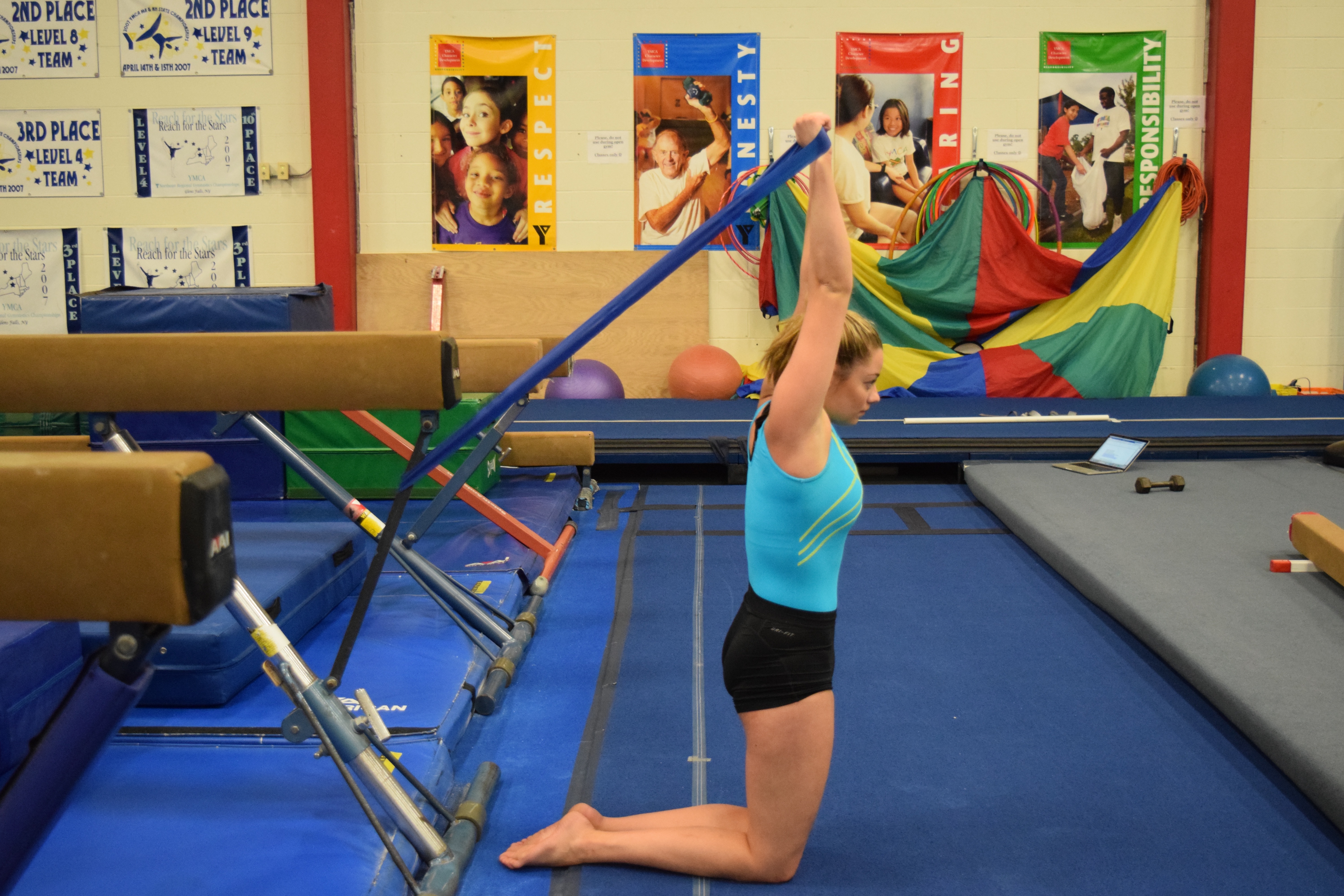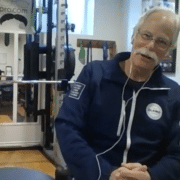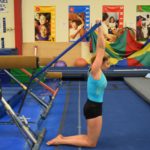Rehab Tips For Clinicians To Treat Gymnasts with Extension Based LBP – Part 1: Acute Phase
Extension based lower back pain is one of the biggest epidemics in gymnasts, cheerleaders, dancers, and others. Injuries range from acute muscular strains, to more series acute symptomatic spine fractures. Over the last few years I have seen quite a few gymnasts for lower back pain, and often times clinicians who come to our seminars talk about how tough it can be to rehab these athletes back to a high level. If you’re not from gymnastics, or don’t have a lot of experience seeing the point of injury to the point of sport return, it can be frustrating.
Before I dive in, remember you can get every thought I have about gymnastics injuries 100% for free in my “Gymnastics Medical and Rehabilitation E-Book”

The Gymnastics Medical Injuries Guide
- Understand the most common injuries in male and female gymnastics, why they occur, and how to prevent them
- Read about the most current science on injuries and rehabilitation in gymnastics
- Get tips on the latest injury risk reduction and rehabilitation practices
We take our privacy seriously and will never share your information. Click here to read our full privacy policy.
In an effort to help, here is Part 1 to my some ideas about how I go about things.
During Acute Phases – Local Pain Management and Address Issues Above or Below
The very acute phase of a back injury for a young athlete can be tricky. For me, a lot of education, manual therapy, and basic exercise is important to help calm down high levels of hypersensitivity. I also think we can use this acute phase to screen and address the issues that may be present above (thoracic spine and shoulders) or below (hip extension and rotation). I strongly feel the lack of hip, thoracic, and shoulder movement variability leads to very rigid unflexible neural patterns that create lots of lumbar extension overload during training. Addressing these issues sets the foundation for the later rehab phases. With that said, we can’t ignore what actually hurts on the athlete. My first few weeks of treatment usually try to get at components of both for both the clinic and a home program.
1. Patient, Parent, Coach Education
Depending on where your background in newer pain science concepts is, that can be very helpful for the athlete to understand whats going on. Along with this, education on stopping the provoking activity (very challenging for some athletes, parents, coaches) is big. They often don’t want to hear it, but they have to. Also, education to avoided over extended sitting or sleeping on stomach positions, and also utilizes hip dominated movement patterns in daily activities may be good to not further sensitize areas of the back involved.
2. Local Pain Management in Lumbar spine
Localized light soft tissue work and pain modulation techniques (whatever you choose) are helpful. IASTM or other manual therapies to the lower back and proximal glute tissue can be helpful to desensitize tissue. Many clinicians I have talked with utilize kinesiology tape on the lower back for afferent input that is non nociceptive, again not sure the research on this but personally I have had patients report it as pain reliving (placebo or actual neural effect who knows). Also, don’t be afraid to introduce modalities of any kind that help reduce perceived pain (real or placebo based approaches) and get the athlete out of a very acute stage. I also teach basic breathing re-education of rib recruitment, encouraging nasal inhalation and long mouth exhalation patterns. Although I haven’t found great biomechanical research for this intervention, I think theoretically pulling a gymnast out of a huge over extended breathing pattern, and also trying to induce a parasympathetic shift on their very acutely heightened system throughout the day has benefit.
3. Distal Mobility Issues Above or Below
Addressing shoulder elevation, thoracic spine extension/rotation, and hip extension/abduction mobility issues is important. Lacking mobility in these areas usually is made up in the lumbar spine during skills, creating overload in the lumbar spine. The more standard thoracic spine and shoulder motion may not be enough for these, athlete’s as, their sport demands excessive ranges. Any limitation in these areas can be a big issue for overtaxing the lower back during hyper extension skills, and is often why they get injured in the first place.
Every clinician is different in their backgrounds and interventions for mobility. All of them may work, and I’m open for all of them if they don’t cause more pain and show improvement in a test-retest mode. I have found equal number of different shoulder soft tissue limitations in gymnasts (lat, pec major and minor, teres, posterior shoulder). I think manual active “pin and stretch” type interventions and some light assisted pec minor stretching are very useful.
https://www.youtube.com/watch?v=c25qjMMAqqU&feature=youtu.be
https://www.youtube.com/watch?v=PYMao0YWzkc
Thoracic spine soft tissue and joint mobility issues from constant hollowing in skills can also be an issue. I like a few basic manual techniques and lumbar locked (prevent lumbar stress) drills. Just be sure proper lumbar flexion base set up and zero pain occurs.
Hip extension and rotation soft tissue limitations or hypertonicity (anterior hip, high groin, TFL) are common for gymnasts that over use lumbar extension and don’t use true hip motion. I use similar manual therapy techniques to soft tissue, isolated correctly performed stretching, PNF type contract relax tone modulation drills (Thomas position or 1/2 kneeling) and follow up control drills are usually my go to. I posted this video that goes over a way to mobilize the hip and not stress the lumbar spine.
4. Distal Control Issues Above or Below
Many athletes may also just have excessive passive hip extension or shoulder elevation range they don’t know how to control or lack strength to access. I personally find this issue, especially in the hips, much more commonly. Many lack static stability or acquire hypermobility in the hip and shoulder joints. Due to this they depend on dynamic stability and strength, which is often overlooked in training. I address these individually first with isolated control drills, then move to more higher level dynamic patterns through the rehab process. I like assisted thoracic spine drills, wall angels, shoulder reach/roll/lift above, and lumbar locked hip extension and hip reach/roll/lift drills below.
That’s all for now. Please keep in mind this information is ONLY intended for medical professionals, and if an athlete is having pain they must be sent to a proper provider. In the next parts to this series I’ll offer more thoughts around progressing through rehabilitation and return to sport. Hope this is helpful!
– Dr. Dave Tilley, DPT








